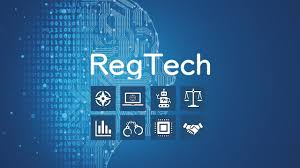The banking landscape is undergoing a remarkable evolution, driven by rapid advancements in technology. As artificial intelligence takes centre stage, it is fundamentally changing the way banks engage with their customers. The importance of cybersecurity has never been greater; it serves as the bedrock upon which trust is built in an increasingly digital world. Meanwhile, automation is revolutionising operations, slashing inefficiencies that once plagued traditional systems. The approach to fraud prevention is shifting towards a more anticipatory model, compliance processes are becoming increasingly autonomous, and the looming presence of quantum computing introduces new challenges that must be navigated. In this dynamic environment, the early adopters will undoubtedly emerge as the frontrunners.

As we delve deeper into this transformation, it becomes clear that the banking sector is in the midst of a comprehensive overhaul. The integration of AI, robust cybersecurity measures, and streamlined automation is laying the groundwork for a new era. Challenger banks and fintech innovators are racing ahead, challenging conventional wisdom and reshaping what customers expect from their financial institutions. For those traditional banks that resist change, the risk of obsolescence grows ever more pronounced.
The inertia created by outdated legacy systems hampers progress, while manual procedures add layers of complexity that frustrate both employees and customers alike. Cybersecurity weaknesses further undermine customer confidence. On the flip side, institutions embracing AI-enhanced personalisation, real-time automation, and state-of-the-art security protocols are positioning themselves as pioneers in this new frontier.
At the heart of this transformation is AI, a catalyst for unprecedented levels of personalisation and operational efficiency. Customers today desire a banking experience that feels tailored to their individual needs. They yearn for services that not only meet their expectations but also anticipate their requirements—delivering relevant solutions while eliminating unnecessary hurdles. With AI at the helm, banks are reimagining their interactions with customers and refining the ways they handle financial data.

Consider the rise of AI-driven chatbots and virtual assistants. These technologies are rapidly supplanting traditional customer service models. No one relishes the thought of enduring long hold times or wrestling with convoluted forms for simple inquiries. Intelligent bots are now capable of resolving these requests in real-time, liberating human agents to concentrate on more intricate matters that truly require their expertise.
But AI’s influence extends far beyond customer service; it is also enhancing the way banks interpret financial behaviors. By analysing transaction histories, spending habits, and online activity, AI empowers customers by foreseeing what they might need next. Imagine receiving a pre-approved loan offer, a personalised investment suggestion, or an enticing mortgage refinancing option—all presented proactively, even before the customer thinks to inquire about them. This innovative technology paves the way for more intelligent decision-making and fosters a more intuitive banking experience, instilling a sense of control and confidence in customers.
In this unfolding narrative of transformation, it is evident that banks willing to embrace change will not only survive but thrive in a future shaped by technology and innovation. The path forward is clear: adapt or become a relic of the past. The banking world is poised for a bright future—one defined by agility, insight, and an unwavering commitment to meeting customer needs in ways previously thought impossible.
In the ever-evolving landscape of banking, the approach to customer engagement is undergoing a remarkable transformation. Imagine a world where customers receive tailored loan offers, unique investment opportunities, or refinancing options before they even think to ask for them. This proactive outreach is not just wishful thinking; it’s made possible through innovative technology that enhances marketing strategies. AI, with its ability to analyse customer data and predict their needs, is at the heart of this transformation. Banks are now able to send personalised messages that resonate with individual customers, creating connections that genuinely engage.

As we delve deeper into this technological revolution, one cannot overlook the paramount role of artificial intelligence in the fight against fraud. Fraud represents a significant threat to customer confidence; once individuals start to question the safety of their financial institutions, they often take their business elsewhere. Traditional methods of detecting fraud tend to react only after suspicious activities have occurred, leaving customers vulnerable. In stark contrast, AI steps in as a proactive guardian, capable of thwarting fraudulent actions before they unfold.
Picture a system that continuously monitors transactions in real-time, equipped with the ability to spot irregularities instantaneously. If an account suddenly initiates large withdrawals from an unexpected location, AI can swiftly flag the transaction or even freeze it, preventing any potential harm. This shift towards a more anticipatory security model marks a pivotal change in how banks protect their clients.

Moreover, AI is revolutionising risk assessment within the banking sector. The conventional credit scoring systems often fall short, relying on limited financial histories and frequently neglecting those who don’t conform to traditional credit profiles. However, AI, with its capability to analyse a broader spectrum of data—considering employment records, digital behaviour, and alternative financial patterns—paints a much clearer picture of an individual’s creditworthiness. This advancement leads to fewer defaults on loans and promotes greater financial inclusion for underserved populations, making the audience feel more secure and included in the financial system.
As the saying goes, “Criminals are becoming increasingly sophisticated,” but so too is artificial intelligence. Fraud detection systems enhanced by machine learning are designed to adapt to new threats as they emerge, making them more effective than ever in preventing fraud. This adaptability of AI reassures the audience that even in the face of evolving threats, their financial security is being actively safeguarded, making them feel reassured and safe.
Yet, amidst these advancements, the banking industry faces its greatest challenge: cybersecurity. Trust is the very foundation upon which banks operate, yet they find themselves at the forefront of cyber threats. As phishing scams, ransomware attacks, and data breaches proliferate, the risks escalate alongside the rapid shift toward digital banking services. The stakes are high; safeguarding customer data and maintaining trust has never been more critical in this interconnected age.
As we navigate this intricate web of technology and trust, it becomes clear that the future of banking lies not only in innovation but also in the unwavering commitment to protecting customers in an increasingly complex landscape.

In an age where customer data and financial transactions face constant threats, the importance of a proactive stance on security has never been more pronounced. The landscape of expectations has shifted dramatically; customers now anticipate robust measures like multi-factor authentication (MFA) as a standard practice. They want their security fortified by biometric solutions—fingerprints that grant access, facial recognition that ensures identity, and behavioural patterns that add an extra layer of verification.
To bolster these defences, the concept of zero-trust architecture has emerged as a crucial strategy. Rather than operating under the assumption that all users and devices within a network are inherently trustworthy, this approach mandates a thorough verification process for every single request. This meticulous scrutiny significantly diminishes the chances of unauthorised access, creating a much safer environment for sensitive information.
As the digital landscape evolves, artificial intelligence has become an indispensable ally in cybersecurity. Financial institutions, particularly banks, are increasingly integrating AI-driven threat intelligence systems into their operations. These sophisticated systems continuously monitor financial networks, scanning for unusual patterns and behaviours in real-time. When anomalies are detected, they act swiftly to neutralise potential threats before they can escalate into serious issues.

Moreover, regulatory frameworks such as the General Data Protection Regulation (GDPR) and the revised Payment Services Directive (PSD2) compel financial entities to adopt stringent security protocols. The consequences of failing to comply with these regulations can be dire—organisations risk incurring hefty fines, suffering reputational harm, and losing the trust of their customers. Regaining that trust can prove to be an uphill battle.
As banks grapple with an ever-growing mountain of compliance requirements, the need for innovative solutions becomes apparent. Manual processes are no longer sufficient; they are overwhelmed by the increasing demands of regulatory oversight and rising operational costs. Enter automation—the game changer that promises not only to streamline compliance efforts but also to reduce expenditures significantly.
Robotic Process Automation (RPA) is already reshaping banking operations. AI-powered bots have taken on responsibilities once reserved for humans, managing compliance checks, conducting Know Your Customer (KYC) verifications, approving loans, and investigating fraud cases. This automation results in swifter, more precise decision-making while slashing costs.

Consider loan approvals—a process that used to be bogged down by human intervention and lengthy timelines. With the advent of AI-driven lending platforms, risk assessments can now be completed almost instantaneously. What once took days can now happen in mere minutes, transforming the customer experience. Similarly, account openings have shed their cumbersome reputation. Automated identity verification, background checks, fraud monitoring, and document validation occur in real time, allowing customers to embark on their banking journeys without unnecessary delays.
In this interconnected world of AI, cybersecurity, and automation, the financial sector stands on the brink of a transformative era. As institutions embrace these advancements, they not only enhance their operational efficiency but also fortify their defences against an ever-evolving array of threats. The future is bright for those willing to adapt and innovate in pursuit of secure, seamless banking experiences for their customers.
In the realm of modern banking, three pivotal technologies—artificial intelligence, cybersecurity, and automation—have emerged as interdependent forces that together forge a more intelligent and resilient financial landscape. Imagine a banking system where these elements work harmoniously, much like a well-orchestrated symphony. Here, artificial intelligence plays the role of the keen observer, constantly scanning the horizon for potential threats while adapting to evolving hacking techniques. Meanwhile, automation acts as the vigilant guardian, ensuring that security updates and compliance checks are executed in real time, effectively sealing off vulnerabilities before they can be exploited. Together, AI-driven automation refines processes with remarkable efficiency, learning from past errors to enhance future performance.

When banks embrace this triad of technology, they open the door to significant competitive advantages. Picture transactions that occur at lightning speed, fortified security measures that provide peace of mind, and customer experiences so seamless that they feel almost magical. Conversely, those institutions that fail to weave these technologies into their operations risk being left in the dust, unable to keep pace with their more progressive counterparts.
As we look toward the future, a new wave of banking innovation is on the horizon, poised to disrupt the status quo. Quantum computing looms large, promising revolutionary advancements in real-time financial modelling but also presenting formidable security challenges. The current encryption methods that have served us well may soon be rendered ineffective as quantum processors develop the capability to breach them in mere seconds. It’s imperative for banks to proactively prepare for a world where quantum-resistant security becomes not just an advantage but a necessity.
Simultaneously, blockchain technology and decentralised finance (DeFi) are redefining how financial transactions occur. Imagine smart contracts facilitating near-instantaneous cross-border payments and fostering transparent lending processes. Banks that harness blockchain solutions will operate with significantly lower costs and enhanced efficiency, positioning themselves as frontrunners in the competitive landscape.
Artificial intelligence itself is on a trajectory of evolution. Soon, it will possess the ability to decipher unstructured data drawn from emails, social media interactions, and voice commands, paving the way for even more precise and predictive financial services tailored to individual needs. Additionally, augmented reality (AR) is anticipated to blossom into a $550 billion market by 2030. Envision a world where smart glasses could replace mobile banking apps, providing real-time financial insights directly into your line of sight.
As executives navigate this transformative journey, there are crucial takeaways to consider. One such insight is the importance of AI-driven personalisation; leveraging AI tools can help institutions craft unique customer experiences tailored to individual preferences and behaviours. In this rapidly evolving landscape, embracing these technologies is not merely a choice but an essential strategy for survival and success in the banking industry. The future beckons with promise and those who adapt will thrive while others watch from the sidelines.

In the ever-evolving landscape of modern business, key executives are increasingly recognising the profound impact that technology can have on their operations and customer relationships. One of the most significant revelations has been the potential of artificial intelligence to revolutionise personalisation. By harnessing AI, organisations can craft experiences that resonate deeply with individual customers, offering them not just products but tailored financial solutions that anticipate their needs. This proactive approach not only fosters greater engagement but also enhances operational efficiency, allowing companies to connect with their clientele in ways that were previously unimaginable.
As they navigate this new terrain, executives are also keenly aware of the pressing need for robust fraud prevention measures. The stakes are high, and the digital marketplace is fraught with risks. To combat these threats, investing in AI-driven real-time monitoring systems has become imperative. These advanced tools can detect unusual patterns and anomalies in transactions, enabling companies to intervene before any financial losses occur. This proactive stance not only protects the organisation but also instils a sense of security and confidence among customers.
In tandem with these strategies, cybersecurity looms large in the minds of leaders across industries. In an age where data breaches can erode customer trust in an instant, prioritising comprehensive cybersecurity measures is non-negotiable. Implementing multi-factor authentication and adopting zero-trust frameworks are essential steps in safeguarding sensitive information. Such measures not only shield businesses from potential threats but also ensure compliance with rigorous regulatory standards, reinforcing the trust that customers place in their financial institutions.

Amidst these advancements, the drive for operational efficiency remains a top priority. Embracing robotic process automation (RPA) offers a transformative solution for banking operations. By automating routine tasks, organisations can streamline compliance processes, minimise manual errors, and significantly enhance their scalability. This shift not only liberates employees from mundane tasks but also empowers them to focus on more strategic initiatives that drive growth and innovation.

In conclusion, as executives reflect on these critical insights, it becomes clear that embracing AI and automation is not merely a choice but a necessity in today’s competitive landscape. By prioritising personalisation, fraud prevention, cybersecurity, and efficiency through automation, they are paving the way for a future where businesses can thrive while fostering deeper connections with their customers.
Secure browsing
When it comes to staying safe online, using a secure and private browser is crucial. Such a browser can help protect your personal information and keep you safe from cyber threats. One option that offers these features is the Maxthon Browser, which is available for free. It comes with built-in Adblock and anti-tracking software to enhance your browsing privacy.
Maxthon Browser is dedicated to providing a secure and private browsing experience for its users. With a strong focus on privacy and security, Maxthon employs strict measures to safeguard user data and online activities from potential threats. The browser utilises advanced encryption protocols to ensure that user information remains protected during internet sessions.
Maxthon private browser for online privacy
In addition, Maxthon implements features such as ad blockers, anti-tracking tools, and incognito mode to enhance users’ privacy. By blocking unwanted ads and preventing tracking, the browser helps maintain a secure environment for online activities. Furthermore, incognito mode enables users to browse the web without leaving any trace of their history or activity on the device.
Maxthon’s commitment to prioritising the privacy and security of its users is exemplified through regular updates and security enhancements. These updates are designed to address emerging vulnerabilities and ensure that the browser maintains its reputation as a safe and reliable option for those seeking a private browsing experience. Overall, Maxthon Browser offers a comprehensive set of tools and features aimed at delivering a secure and private browsing experience.
Maxthon Browser, a free web browser, offers users a secure and private browsing experience with its built-in Adblock and anti-tracking software. These features help to protect users from intrusive ads and prevent websites from tracking their online activities. The browser’s Adblock functionality blocks annoying pop-ups and banners, allowing for an uninterrupted browsing session. Additionally, the anti-tracking software safeguards user privacy by preventing websites from collecting personal data without consent.
By utilising Maxthon Browser, users can browse the internet confidently, knowing that their online activities are shielded from prying eyes. The integrated security features alleviate concerns about potential privacy breaches and ensure a safer browsing environment. Furthermore, the browser’s user-friendly interface makes it easy for individuals to customise their privacy settings according to their preferences.
Maxthon Browser not only delivers a seamless browsing experience but also prioritises the privacy and security of its users through its efficient ad-blocking and anti-tracking capabilities. With these protective measures in place, users can enjoy the internet while feeling reassured about their online privacy.
In addition, the desktop version of Maxthon Browser works seamlessly with their VPN, providing an extra layer of security. By using this browser, you can minimise the risk of encountering online threats and enjoy a safer internet experience. With its combination of security features, Maxthon Browser aims to provide users with peace of mind while they browse.
Maxthon Browser stands out as a reliable choice for users who prioritise privacy and security. With its robust encryption measures and extensive privacy settings, it offers a secure browsing experience that gives users peace of mind. The browser’s commitment to protecting user data and preventing unauthorised access sets it apart in the competitive market of web browsers.

By choosing Maxthon Browser, users can feel confident that their online activities are safeguarded from potential threats and invasions of privacy. In an age where digital security is more important than ever, opting for a browser like Maxthon is a proactive step towards ensuring a safer online experience. Embrace the reassurance of secure browsing with Maxthon Browser today!
